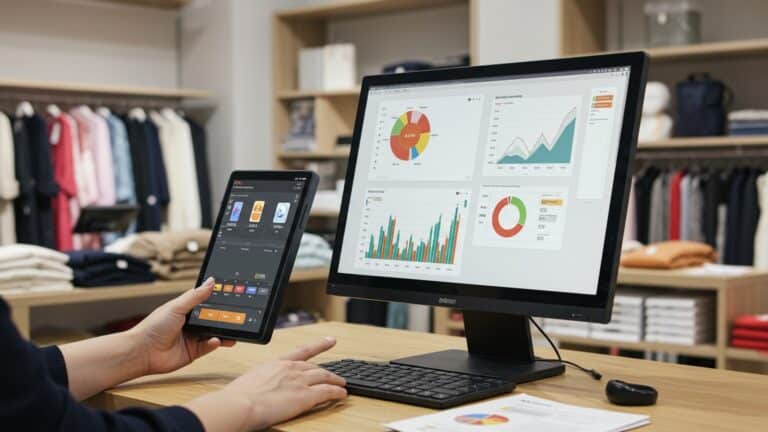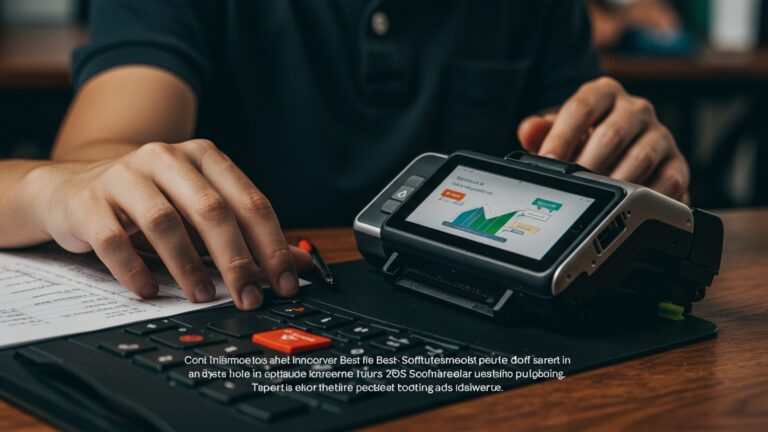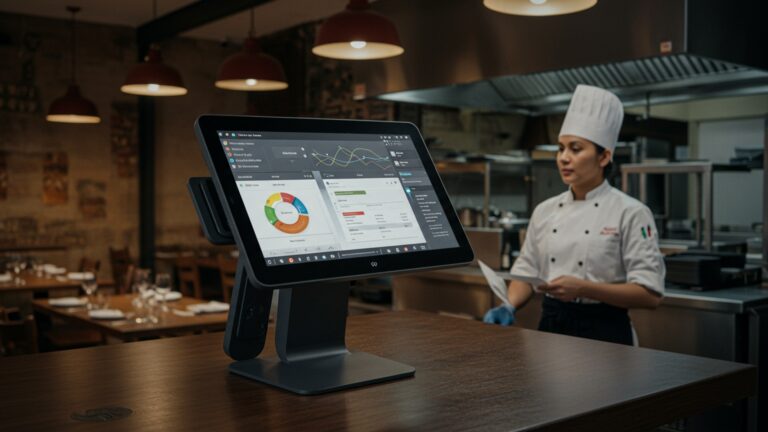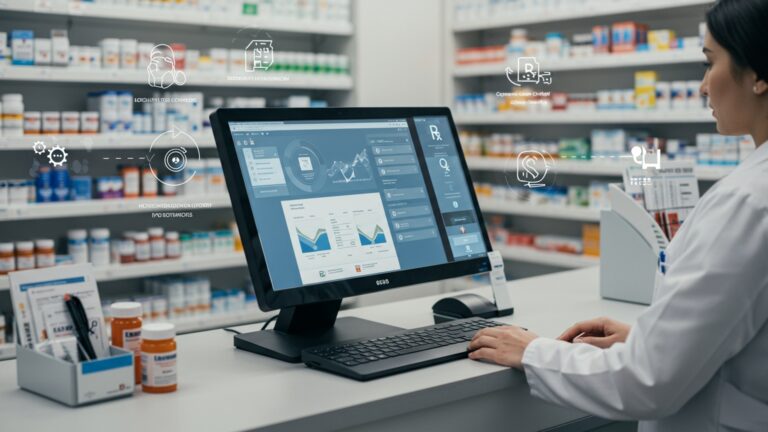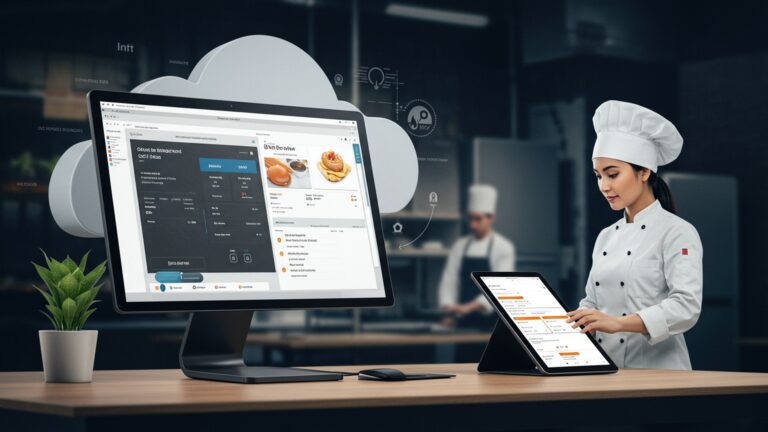Discover the 7 Best Restaurant POS Software Options for Seamless Operations
In today’s fast-paced culinary environment, a restaurant’s ability to thrive increasingly depends on the sophistication and integration of its Point of Sale (POS) system. Modern best restaurant POS software transcends simple transaction processing, evolving into a strategic operational hub that orchestrates everything from real-time inventory management and staff scheduling to advanced table management and robust customer relationship tools. Recent innovations, such as AI-driven sales forecasting and seamless integration with popular online ordering and third-party delivery platforms, underscore a critical industry pivot towards comprehensive, cloud-based solutions. Selecting the optimal system is no longer a luxury but a necessity for streamlining operations, elevating the guest experience through personalized service and efficient order fulfillment. ultimately securing sustainable growth and profitability.
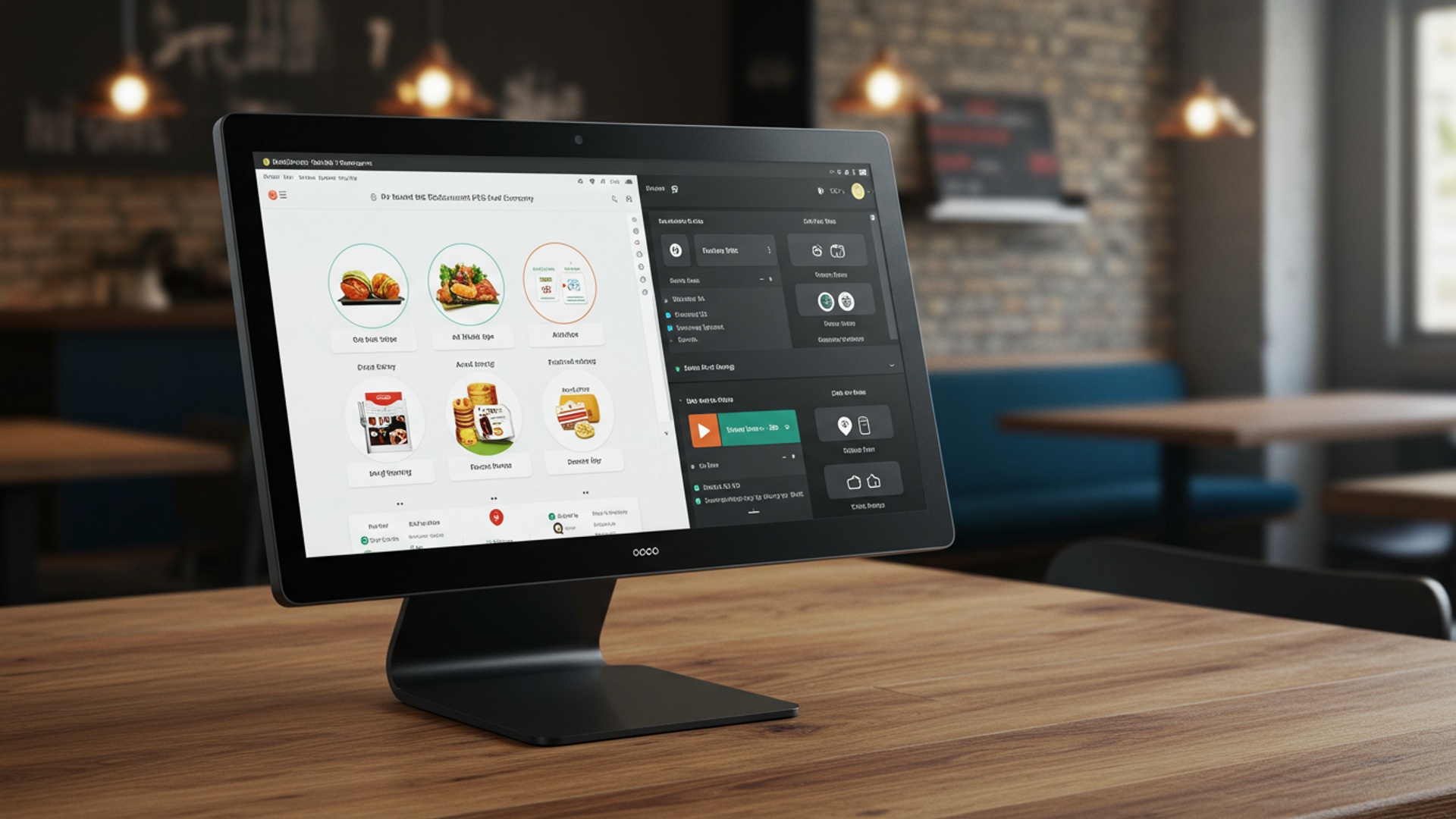
Understanding Restaurant POS Software: The Backbone of Modern Operations
In the fast-paced world of culinary arts and hospitality, efficiency isn’t just a luxury—it’s a necessity. At the heart of a smoothly running restaurant lies its Point of Sale (POS) system. But what exactly is restaurant POS software? Simply put, it’s a sophisticated system that goes far beyond processing payments. It’s a comprehensive platform designed to manage all aspects of your restaurant’s operations, from taking orders and tracking inventory to managing staff and analyzing sales data. Think of it as the central nervous system of your establishment, connecting front-of-house (FOH) and back-of-house (BOH) functions seamlessly.
The evolution of POS systems has transformed them from simple cash registers into powerful, cloud-based solutions. Modern restaurant POS software offers unparalleled capabilities that empower owners and managers to make data-driven decisions, enhance customer experience. ultimately, boost profitability. For any restaurant aiming for seamless operations and sustainable growth, investing in the best restaurant POS software is no longer optional; it’s a strategic imperative.
Why the Right POS Software is Crucial for Your Restaurant’s Success
The impact of a robust POS system on a restaurant’s bottom line and operational fluidity cannot be overstated. It addresses numerous pain points that traditional methods simply can’t handle. Here are some key benefits and real-world applications:
- Streamlined Order Management
- Accurate Inventory Control
- Enhanced Customer Relationship Management (CRM)
- In-depth Reporting and Analytics
- Integrated Online Ordering and Delivery
- Efficient Employee Management
Servers can take orders tableside using handheld devices, sending them directly to the kitchen display system (KDS). This reduces errors, speeds up service. improves communication between FOH and BOH.
Imagine knowing exactly how many steaks you have left, or when to reorder your most popular wine. POS systems track ingredients and finished dishes, helping minimize waste, prevent stockouts. identify popular items. A fine dining restaurant, for instance, can track high-value ingredients like truffles or specific cuts of meat, ensuring precise cost calculations and reducing spoilage.
Many systems allow you to store customer preferences, order history. even loyalty program data. A café using its POS to remember a regular’s favorite coffee order and dietary restrictions can offer a truly personalized experience, fostering loyalty.
Beyond just sales figures, the best restaurant POS software provides powerful insights into peak hours, best-selling dishes, server performance. even profit margins per item. This data is invaluable for menu engineering, staffing optimization. marketing strategies. For example, a restaurant chain can identify underperforming locations or successful promotional campaigns across different branches.
With the rise of digital dining, a POS that integrates online orders directly into the kitchen workflow is essential. This eliminates manual entry errors and simplifies the process for both staff and customers.
Track clock-ins/outs, manage shifts. assess server performance, all from one platform. This ensures fair labor practices and helps optimize staffing levels during busy periods.
Key Considerations When Choosing the Best Restaurant POS Software
Selecting the ideal POS solution requires careful evaluation of several factors unique to your restaurant’s specific needs. What works for a bustling pizzeria might not be suitable for an upscale bistro. Here’s what to look for:
- Ease of Use
- Core Features
- Order Management
- Inventory Management
- Payment Processing
- Reporting & Analytics
- Customer Management
- Employee Management
- Scalability
- Integration Capabilities
- Hardware Compatibility
- Pricing Structure
- Customer Support
- Security
The interface should be intuitive for staff, minimizing training time and reducing errors during busy shifts.
Table management, splitting checks, modifiers, coursing.
Real-time tracking, vendor management, recipe costing.
EMV, contactless, mobile payments, gift cards.
Customizable reports, sales trends, labor costs.
Loyalty programs, customer profiles.
Time clock, permissions, performance tracking.
Can the system grow with your business? If you plan to open new locations or expand your offerings, ensure the POS can adapt.
Does it integrate with other essential tools like accounting software (e. g. , QuickBooks), third-party delivery services, or reservation systems?
Is it compatible with existing hardware, or does it require proprietary equipment? Consider the cost and reliability of terminals, printers. handheld devices.
comprehend the costs involved, including subscription fees, transaction processing rates, hardware costs. support plans.
24/7 support is often critical in the restaurant industry, where issues can arise at any time.
Ensure compliance with PCI DSS standards for secure payment processing and data protection.
Discover the 7 Best Restaurant POS Software Options for Seamless Operations
Choosing the best restaurant POS software involves sifting through numerous options, each with its unique strengths. We’ve narrowed it down to seven top contenders, renowned for their comprehensive features, reliability. ability to transform restaurant operations.
1. Toast POS
Toast is an industry-leading, cloud-based POS system specifically designed for restaurants. It offers an end-to-end platform that covers everything from order taking and kitchen management to online ordering and guest loyalty programs.
- Key Features
- Pros
- Purpose-built for restaurants, offering deep industry-specific functionalities.
- Comprehensive suite of tools reduces the need for multiple vendors.
- Strong offline mode capabilities, ensuring operations continue even without internet.
- Excellent customer support tailored to restaurant needs.
- Cons
- Proprietary hardware can be a significant upfront investment.
- Can be more expensive for smaller businesses compared to general POS options.
- Steeper learning curve due to the extensive feature set.
- Ideal For
- Real-world Application
Integrated online ordering and delivery, kitchen display system (KDS), handheld devices, robust inventory management, powerful reporting and analytics, loyalty programs, payroll integration.
Full-service restaurants, quick-service restaurants, cafes. multi-location establishments seeking an all-in-one, restaurant-specific solution.
A mid-sized, upscale restaurant chain utilized Toast to standardize menus across all locations, manage online orders seamlessly from their website. gain granular insights into server performance and peak dining hours, leading to a 15% increase in operational efficiency.
2. Square for Restaurants
Building on Square’s reputation for easy payment processing, Square for Restaurants is a dedicated POS solution tailored for food service businesses. It’s known for its user-friendly interface and integrated payment processing.
- Key Features
- Pros
- Extremely intuitive and easy to set up, making it ideal for new businesses.
- Transparent pricing with integrated payment processing.
- Flexible hardware options, including iPads and Square’s own terminals.
- Strong ecosystem with additional tools like Square Payroll and Marketing.
- Cons
- Advanced features might require add-ons, increasing monthly costs.
- Less specialized inventory management compared to dedicated restaurant systems.
- Customer support can sometimes be slower for complex issues.
- Ideal For
- Real-world Application
Customizable table layouts, course management, bill splitting, robust online ordering platform, integrated delivery options, inventory tracking, employee management, detailed sales reports.
Small to medium-sized restaurants, cafes, food trucks. quick-service establishments looking for an affordable, easy-to-use system with integrated payments.
A popular local coffee shop leveraged Square for Restaurants to manage their bustling morning rush. Their baristas quickly learned the system, processed orders efficiently on iPads. utilized the integrated online ordering feature, allowing customers to pre-order and skip the line, significantly boosting customer satisfaction and throughput.
3. Revel Systems
Revel Systems is a highly customizable, iPad-based cloud POS platform that caters to a wide range of restaurant types, from quick service to large enterprises. It stands out for its robust feature set and scalability.
- Key Features
- Pros
- Highly customizable to fit specific business workflows.
- Strong enterprise features, excellent for multi-location businesses.
- Open API allows for integration with a vast array of third-party services.
- Reliable offline mode.
- Cons
- Higher cost structure, making it less accessible for very small businesses.
- Implementation can be complex due to its extensive customization options.
- Customer support can sometimes be inconsistent.
- Ideal For
- Real-world Application
Advanced inventory management with ingredient tracking, enterprise-level reporting, loyalty programs, robust employee management, kitchen display system (KDS), open API for extensive integrations.
Growing restaurants, multi-location chains, quick-service and full-service restaurants requiring a highly flexible and powerful system.
A regional chain of fast-casual restaurants adopted Revel Systems to consolidate operations across 10 locations. The detailed inventory tracking helped them reduce food waste by 18%. the centralized reporting allowed them to identify best-selling menu items and optimize procurement across all their outlets.
4. Lightspeed Restaurant
Lightspeed Restaurant is a cloud-based POS system designed to simplify operations for restaurants of all sizes. It’s known for its intuitive interface, robust inventory management. comprehensive reporting capabilities.
- Key Features
- Pros
- Intuitive interface minimizes training time for staff.
- Exceptional inventory management, especially useful for complex menus.
- Strong analytics and reporting tools provide deep business insights.
- Excellent for both FOH and BOH operations.
- Cons
- Pricing can be on the higher side, especially for advanced features.
- Some users report occasional glitches with integrations.
- Customer support response times can vary.
- Ideal For
- Real-world Application
Table management, advanced menu customization, ingredient-level inventory, detailed reporting, integrated online ordering, loyalty programs, multi-location management, KDS integration.
Fine dining, bars, cafes. multi-location restaurants that require sophisticated inventory control and detailed reporting.
A popular gastropub with a rotating menu of craft beers and seasonal dishes found Lightspeed Restaurant indispensable. Its ingredient-level inventory tracking helped them manage their complex beverage program and unique food offerings, ensuring they never ran out of popular items and accurately costed each dish.
5. Clover POS
Clover offers a versatile suite of POS devices and software that can be customized with an app market. It’s known for its sleek hardware and adaptability, making it suitable for various business types, including restaurants.
- Key Features
- Pros
- Stylish and compact hardware fits well in any setting.
- Highly customizable through its extensive app market.
- Easy to set up and use for basic operations.
- Integrated payment processing.
- Cons
- Core restaurant features may require additional apps, increasing cost.
- Less specialized for complex restaurant operations compared to Toast or Lightspeed.
- Can be tied to specific payment processors, limiting flexibility.
- Ideal For
- Real-world Application
Custom menu creation, order management, employee management, extensive app market for additional functionalities (e. g. , loyalty, online ordering), integrated payment processing, sleek hardware designs.
Small to medium-sized cafes, quick-service restaurants. businesses that appreciate modularity and sleek hardware.
A small, bustling smoothie bar used Clover’s compact hardware and integrated payment solution. They added a loyalty app from the Clover marketplace, allowing them to track customer visits and offer rewards, which significantly increased repeat business.
6. TouchBistro
TouchBistro is an iPad POS system built specifically for restaurants, offering a comprehensive suite of tools for both FOH and BOH. It’s renowned for its robust table management and easy-to-use interface.
- Key Features
- Pros
- Extremely user-friendly and intuitive, especially for server-side operations.
- Strong table management features, ideal for full-service restaurants.
- Reliable offline mode for uninterrupted service.
- Dedicated customer support for restaurants.
- Cons
- Primarily iPad-based, which might not suit all hardware preferences.
- Inventory management can be less granular than some competitors.
- Some advanced features come at an additional cost.
- Ideal For
- Real-world Application
Advanced table management, detailed menu management, integrated online ordering, KDS, inventory management, staff management, powerful reporting, customer loyalty options.
Full-service restaurants, bars, cafes. quick-service establishments looking for an easy-to-use, iPad-centric solution.
A popular family-style restaurant with high table turnover implemented TouchBistro. Their servers quickly mastered the intuitive iPad interface for order taking and table management, leading to faster order processing and a noticeable reduction in order errors, enhancing the overall dining experience.
7. Upserve by Lightspeed
Upserve, now part of Lightspeed, is a powerful restaurant management platform known for its robust analytics, guest management. server performance tracking. It’s designed to help restaurants gain deeper insights into their operations.
- Key Features
- Pros
- Exceptional data analytics and reporting for informed decision-making.
- Strong guest management features, allowing for personalized service.
- Menu intelligence helps optimize menu items for profitability.
- Seamless integration with payment processing.
- Cons
- Pricing can be higher, particularly for smaller operations.
- Requires a commitment to leveraging data for full benefit.
- Some users report a learning curve for advanced reporting features.
- Ideal For
- Real-world Application
Predictive analytics, guest book CRM, server performance insights, inventory management, menu intelligence, online ordering, payment processing.
Restaurants focused on data-driven growth, fine dining establishments. those prioritizing guest experience and menu optimization.
A high-volume restaurant specializing in craft cocktails and small plates used Upserve by Lightspeed to examine server performance and menu profitability. They discovered that specific servers consistently upsold higher-margin items and identified underperforming dishes, allowing them to refine their menu and provide targeted training, resulting in a 10% increase in average check size.
Comparison of the Best Restaurant POS Software Options
To help you visualize the differences, here’s a comparative table highlighting key aspects of the best restaurant POS software options:
| POS Software | Best For | Key Strengths | Primary Hardware | Pricing Model (General) |
|---|---|---|---|---|
| Toast POS | Full-service, QSR, multi-location | Restaurant-specific, all-in-one, robust offline mode | Proprietary Android devices | Subscription + Payment Processing |
| Square for Restaurants | Small-to-medium restaurants, cafes, food trucks | User-friendly, integrated payments, affordable | iPads, Square Terminals | Subscription (free to paid tiers) + Payment Processing |
| Revel Systems | Growing restaurants, multi-location, high customization needs | Enterprise features, open API, highly customizable | iPads | Subscription + Payment Processing |
| Lightspeed Restaurant | Fine dining, bars, cafes, complex inventory | Intuitive interface, advanced inventory, strong analytics | iPads, desktop | Subscription + Payment Processing |
| Clover POS | Small cafes, QSR, modular needs | Sleek hardware, app market, easy setup | Proprietary Android devices | Subscription + Payment Processing |
| TouchBistro | Full-service, bars, cafes (iPad-centric) | User-friendly, excellent table management, offline mode | iPads | Subscription + Payment Processing |
| Upserve by Lightspeed | Data-driven restaurants, fine dining, guest focus | Predictive analytics, guest CRM, menu intelligence | Proprietary terminals, iPads | Subscription + Payment Processing |
Making Your Choice: Actionable Takeaways
Choosing the best restaurant POS software is a significant decision that will impact every facet of your business. Here’s an actionable approach to ensure you pick the right one:
- Assess Your Specific Needs
- Budget Realistically
- Prioritize Ease of Use
- Consider Scalability
- Check Integration Capabilities
- Test Drive with Demos
- Read Reviews and Talk to Peers
Are you a quick-service cafe, a fine-dining establishment, or a multi-location chain? List your non-negotiable features (e. g. , robust inventory, online ordering, detailed reporting).
Consider not just the monthly subscription but also hardware costs, transaction fees, installation. ongoing support.
Your staff will be using this system daily. A complicated interface leads to errors and frustration. Request demos and involve key staff in the evaluation process.
Think about your future growth. Will the POS system be able to handle increased volume, new locations, or expanded services without a complete overhaul?
Does it play well with your existing accounting software, reservation systems, or third-party delivery platforms? Seamless integration saves time and prevents data silos.
Most providers offer free trials or personalized demos. Take advantage of these to see the system in action and test its core functionalities relevant to your operations.
Look for independent reviews and, if possible, speak with other restaurant owners who use the systems you’re considering. Their real-world experiences can provide invaluable insights.
By thoroughly evaluating these factors and understanding the strengths of each of the leading POS options, you can confidently select the best restaurant POS software that will not only streamline your operations but also drive your restaurant’s success for years to come.
Written by PromotoAI
promotoai generate content that ranks
Conclusion
Choosing the right restaurant POS software isn’t merely about adopting technology; it’s about strategically investing in the operational core of your business. From my observations working with various eateries, the real magic happens when a system seamlessly integrates with your unique workflow, transforming chaotic peak hours into smooth service. Don’t just chase the flashiest features; prioritize robust inventory management, efficient table management, and, critically, a user-friendly interface that empowers your staff. Current trends, like integrated online ordering platforms and QR code payment options, are no longer luxuries but essentials for today’s dynamic restaurant landscape. My personal tip: always request a demo, even for the most highly-rated options. See how it feels to punch in an order or split a bill; the intuitive flow can make all the difference on a busy Friday night. Remember, your chosen POS system is more than just a billing tool; it’s the silent orchestrator of your restaurant’s success, propelling you towards enhanced efficiency and a superior customer experience. Embrace this choice with confidence, knowing it’s a pivotal step towards mastering seamless operations. For more insights on current restaurant technology trends, consider exploring reputable industry resources like the National Restaurant Association’s tech reports.
More Articles
How to Get the Most Affordable POS for Your Indian Restaurant Business
Learn How to Implement POS Software for Cloud Kitchen Success in India
Discover the 7 Best POS Software Solutions in India for Your Business
Learn 8 Smart Ways POS Software Streamlines Inventory Management
5 Essential Features Your POS Billing Software Needs for GST Compliance
Written by PromotoAI
promotoai generate content that ranks
FAQs
What exactly is a restaurant POS system?
It’s the central hub for your restaurant’s operations. Think of it as a super-smart cash register that also handles orders, payments, tracks sales. often much more, all designed specifically for the unique needs of a food service business.
Why should I bother with a dedicated POS for my restaurant?
A good restaurant POS does way more than just process transactions. It streamlines order taking, helps manage your tables, keeps track of inventory, makes staff management easier. provides valuable data on your sales and performance. This all leads to better efficiency, happier customers. ultimately, more profit.
How did you decide on these ‘best’ POS options?
We looked at several key factors. We considered ease of use, essential restaurant-specific features like table management and online ordering integration, reliability, customer support, pricing models. how well they can grow with your business. The goal was to highlight options that offer a strong balance across these crucial areas.
What features are crucial for a top-notch restaurant POS?
Look for things like intuitive order management (taking orders, modifying them, splitting checks), table management and reservation tools, robust payment processing, inventory tracking, employee management (time clocks, shift scheduling). detailed sales reporting. Online ordering and delivery integration are also super crucial these days!
Is it a big hassle to switch to new POS software?
It can seem daunting. modern POS systems are often designed to be user-friendly. Most providers offer good support during setup and training. While there’s always a learning curve, the long-term benefits of improved efficiency usually far outweigh the initial effort.
How much does restaurant POS software typically cost?
Pricing varies quite a bit depending on the features you need, the number of terminals. the provider. You might see monthly subscription fees, one-time hardware costs. sometimes transaction fees. There are options for all budgets, from basic systems to comprehensive enterprise solutions.
Can these systems really help with inventory and staff?
Absolutely! Many of the best restaurant POS systems come with integrated inventory management, helping you track ingredients, reduce waste. manage suppliers. For staff, they often include features like time clock functionality, shift scheduling. performance tracking, making payroll and team management much simpler.

